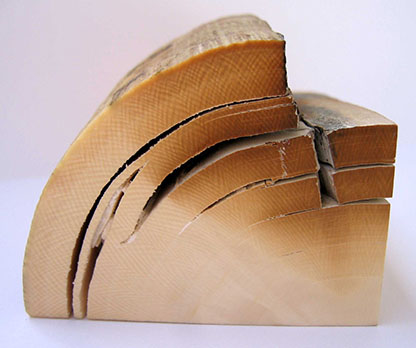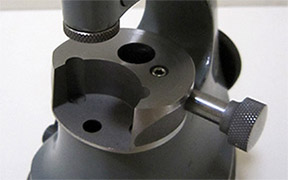The choice of materials for making watches is also varied. An important condition is that the watch should be precise and reliable. This steel, brass, bronze, gold, silver, wood, bone, mother of pearl, stone and others. For the aesthetics of clockwork, I use intarsia, wood carving, bone carving, stone carving, casting and others.
Ivory

In order to protect endangered species of fauna and flora, the World Conservation Union in 1963 adopted a resolution on the signing of an international agreement. Such a document since 1975 is The Convention on International Trade in Endangered Species of Wild Fauna and Flora (CITES), which includes various degrees of protection for more than 33,000 species of animals and Plants. Since that moment, no species under its protection has died out as a result of trade. The Convention works to establish control over international trade. It requires that all imports, exports, re-exports and introductions from the sea of certain species of animals and plants be made on the basis of permits and certificates. Russia became a party to the Convention in 1992, as the legal successor to the USSR, which acceded to this document in 1976.
Ivory is the dental substance of tusks of African and Indian elephants and mammoths. Very durable, easy to process. It is exported from Africa and India. In Russia, many tusks of a mammoth (an extinct elephant) are found in the northeast of Siberia. Elephant fangs reach 2.5 m in length and 90 kg in weight. The cut is elliptical, the structure resembles a tree: the surface layer is about 3 mm thick and differs little from the main mass, but sometimes it is dark. Ivory consists of 56-59% of calcium phosphate. Hardness is 2.75-3.5 on the Mohs scale. Density - 1,7-1,85 g/cm³, in the mammoth - 2,0-2,2 2,0-2,2 g/cm³.
A typical net pattern on the cut of tusks is found only in a squad of Proboscidea. But the angle in the structure of the lines of the drawing is different for each kind.
Below are given respectively the following values of the angles:
- Ivory – 100-120°
- Mammoth – 80-90°
- Mastodon – 40-50°
Bone of mammoth tusk

The history of the use of ivory, as a precious ornamental material is very old. There are mentions that the ancient Greeks made the statues from this material. From the bones made the covers of sacred books, consular diptychs, dice and dominoes. In the 18-19th centuries thin elephant ivory plates served as the basis for portrait miniatures. They are also used for making piano keys. Ivory is also used in incrustation.
Trade in ivory, which brings great profits, led to a merciless destruction of elephant populations. In connection with this Indian elephant and some populations of the savannah African elephant, the Convention defined to the first degree of protection (Anh. I WA; Anh. A EG-VO), and in 1989 CITES decided to ban to kill elephants and trade ivory. However, in 1997, recognizing that some African countries managed to increas of elephant population, he allowed Botswana, Namibia and Zimbabwe to sell Japan 50 tons of ivory.
The Convention ban does not apply to trade in mammoth tusks, since their population died out in the prehistoric period.
In the European Union, the provisions of the Convention operate through the Ordinance (VO (EG) No. 338/97, VO (EG) No. 865/2006), according to which the ivory of the African elephant is in the highest degree of protection (A). To use ivory for commercial purposes, it is necessary to have an official exclusion from the ban on trade in the form of a certificate. This certificate can be obtained only in case of legal import of ivory before January 18, 1990, i.е. until the inclusion of the ivory in the list of the first degree of protection. Within the European Union, the prescriptions of the Federal Republic of Germany (Amtsblatt der EU No. 1 140/18 of 23.05.1997) apply in this regard.
Everyone who deals with the processing of this material must have a relevant book for ivory, where the origin of the material is documented without gaps, as well as the weight of waste, cuttings residues (including dust) and finished products.
Mother-of-pearl

Wood










